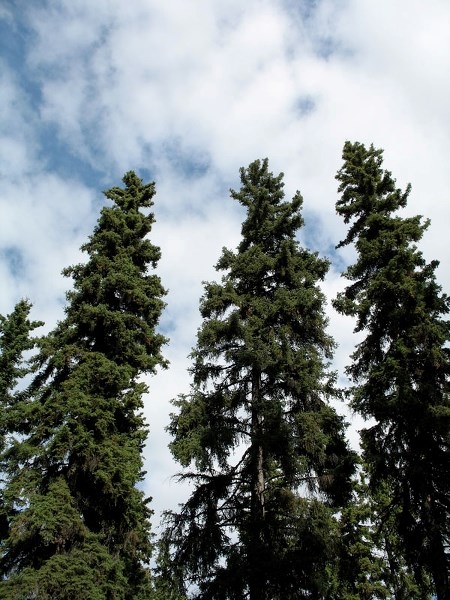St. Albert's official tree may vanish from the city due to climate change, suggests a new report, unless people take action to address it.
Wildlife ecologist Richard Schneider published a study this week on behalf of the Alberta Biodiversity Monitoring Institute looking at the likely effects of climate change on Alberta's ecosystems. The study, which was backed by the province, is the most comprehensive report of its kind for Alberta to date.
Schneider used climate models and paleontological records (e.g. pollen from core samples) to predict the effects of climate warming on 21 natural sub-regions in Alberta. St. Albert is in the central parkland region.
Climate models predict that Alberta will warm by at least 2 C over the next century, Schneider said, assuming concerted global action to reduce greenhouse gas emissions, or up to 6.5 C in the worst-case scenario (no emission reductions).
Schneider found that climate change would cause every Alberta ecosystem to shift north, triggering wholesale changes in plant and animal life. Edmonton's aspen forest will become more like the dry prairie around Calgary by about 2080, for example, whereas Calgary's prairie will become more like Wyoming's.
"The most dramatic changes will be anywhere in the north," Schneider said, which is the boreal forest – a place of towering jack pine, caribou and muskeg. "Under the worst case scenario, the projection is for a grassland climate all the way up to Wood Buffalo Park."
Two to six degrees might not sound like much, Schneider said, but these are yearly average temperatures. "The difference between Calgary and Fort McMurray is really only three degrees." Six degrees would cause great shifts in moisture and evaporation levels, affecting plant growth patterns.
"At two degrees, it'll still be a boreal forest," he said. "Under four to five degrees, no way. You cannot maintain that forest because it'll just be too dry."
The central parkland region around St. Albert is predicted to see less runoff and groundwater flows due to increased evaporation, earlier spring melt and hotter summers, the report found. Water levels in wetlands will fall, with seasonal wetlands being dry longer. "In the worst case," Schneider said, "you'll see a drying up of most of those shallow water bodies we'd have here."
Warming would also have dire implications for St. Albert's official tree, the white spruce. With two degrees of warming, Schneider's research predicts the loss of white spruce in low-lying parts of the central mixed-wood region due to fire by 2100. With six, it will be too dry for white spruce to reproduce, meaning they will eventually vanish from the region.
These effects also apply to white spruce in St. Albert, Schneider said, which is south of the central mixed-wood region – in fact, our trees will be affected before the ones up north.
Adult white spruce can endure these conditions, says Schneider, so about half of today's trees should survive to 2100. But as bugs and fire take them out, they'll be replaced by trees like aspen. "Under the worst scenarios, you'll lose the aspen as well."
What to do
Climate change isn't a complete disaster, Schneider said: we'll have an earlier spring and less snow, for example, and some species down south will thrive. Nor will these changes happen overnight.
"The Alberta everyone knows and grew up with is not going to be the Alberta that our kids and grandkids are going to see," he said.
While wild stands of white spruce might die off, Schneider says cities like St. Albert could maintain private ones for decades even with climate change. "It's really a question of economics." But the fate of wild stands like the boreal will depend on us getting our emissions under control.
The city will release its greenhouse gas reduction plan this Sept. 16, said community sustainability manager Leah Kongsrude.
City residents spend about $170 million a year on energy, she noted, 61 per cent of which is on gasoline. "If people want to make a difference in terms of climate change … and save money for themselves, they should really look at their transportation."
Schneider's study can be found at www.biodiversityandclimate.abmi.ca.




